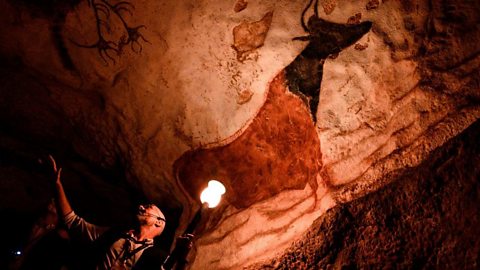Is there anything spookier that wandering around a town once bustling with people and activity that is now abandoned and deserted?
Often nicknamed ghost towns, these once populated places become unoccupied for all kinds of reasons - natural and manmade disasters, changing economic conditions and political upheaval, among them. From settlements in the Norwegian Arctic to villages in the hills of southern Italy, these spectacular sights have since been reclaimed by nature or become popular tourist attractions.
Join ҙуПуҙ«ГҪ Bitesize as we explore the history of six fascinating abandoned cities from across the world.

Bodie, California
Located in the heart of Mono County, east of the Sierra Nevada Mountains in California, the town of Bodie was founded when a small group of An individual who searches for gold, oil, or other valuable substances. discovered a small amount of gold just after the California Gold Rush, in 1859. One of these prospectors was W.S. Bodey; the town would eventually be named after him under a different spelling.
After hearing about the discovery, people flocked to the town boosting its population to nearly 10,000 and transforming it from a small mining camp to a bustling settlement. It had saloons, hotels, a Chinatown and even boasted the USвҖҷs first long-distance electricity transmission lines.
But it wasnвҖҷt to last. The gold deposits ran dry and, with mining officially ending in 1942, people soon began to leave. A number of fires destroyed many of the buildings, and by the 1950s Bodie was deserted. Today it is a popular tourist attraction, and you can wander its deserted streets and travel through by snowmobile in the winter months.
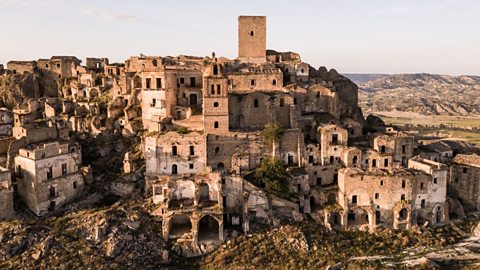
Craco, Italy
Perched dramatically on a hill in southern Italy, the medieval town of Craco must be one of the most picturesque ghost towns in the world, but it was only abandoned relatively recently. The ancient town, which might have been originally settled by the Greeks as far back as the 6th century BC, survived plague and wars, as well as migration due to poor agricultural conditions.
But a series of landslides in the 1950s, thought to be caused by faulty pipework and excavations in the previous decade, made the town very dangerous to live in. Periodic earthquakes only worsened the situation, and in 1963 most of the the town was evacuated, with the residents relocated to newly built areas. The final inhabitants left in 1980.
The town can only now be visited as part of guided tours, due to the instability of the buildings. But it has been used as the location for major films including Quantum Of Solace in 2008.
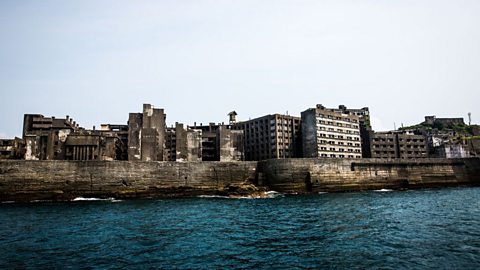
Hashima Island, Japan
While other countries have ghost towns, Japan has a whole ghost island! Hashima Island is located nine miles off the coast of Nagasaki. The island was developed by the Mitsubishi company in the 1880s as a hub of national coal mining, and once had a population of over 5,000 people.
It also boasted apartments, a hospital and communal baths. The shape of the island, which resembles a battleship, has earned it the nickname of Gunkanjima - Battleship Island.
When the coal seams ran dry in 1974, the island was rapidly abandoned and left to decay.
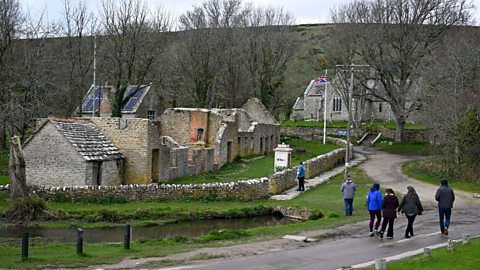
Tyneham, UK
Tyneham, often called вҖҳDorsetвҖҷs lost villageвҖҷ, has a history dating back at least to the Iron Age. But in 1943, in the midst of World War Two, the whole village was requisitioned to be used to train troops for the Normandy landings. Its 225 residents were forcibly evacuated.
One left a note on the church door that read: вҖңPlease treat the church and houses with care. We have given up our homes where many of us lived for generations to help win the war to keep men free. We shall return one day and thank you for treating the village kindly."
In fact, despite protests, the villagers were never allowed to return. The village can be visited, but, since it still belongs to the Ministry Of Defence, only when its military firing ranges are open to the public. Tourists are warned to stick to the paths as there is danger from unexploded shells.
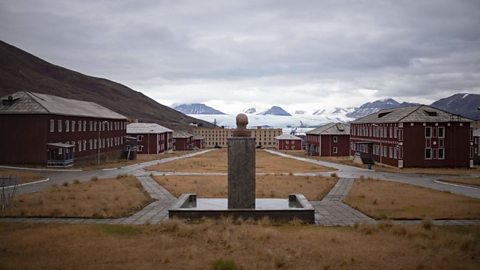
Pyramiden, Norway
One of the worldвҖҷs remotest - and coldest - ghost towns is Pyramiden in Norway. Located in the Arctic on the remote A group of Norwegian islands in the Arctic Ocean. this former coal-mining town was founded in 1910 by Sweden but then sold to Russia in 1927. It gets its name from the pyramid-shaped mountain which looms over the settlement.
At its height, in the 1950s, over 2,500 people lived and worked there, enduring the harsh Arctic Winter, when it is cut off from the outside world, there is no sunlight, and the place is battered by freezing cold winds. Russia built a cultural palace as well as a swimming pool to make life easier for the inhabitants.
But when the mines closed in 1998 there was no reason for people to live in Pyramiden, and the town was rapidly abandoned. Today there is just a skeleton staff of caretakers. Reindeer and arctic foxes wander the streets and the ghostly town, while a statue of Vladimir Lenin staring out onto of the empty buildings, has become a tourist attraction for adventurous visitors.
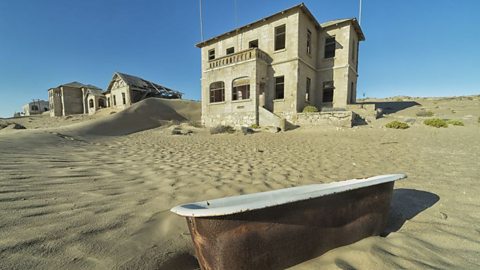
Kolmanskop, Namibia
The strange history of Kolmanskop in Namibia began in 1908 when a railway worker walking in the desert discovered shiny stones glinting in the sand. They turned out to be diamonds, and soon prospectors flocked to the region in search of their fortunes.
Kolmanskop quickly grew to be a wealthy, luxurious town. By 1912 it was one of the richest town in Africa, boasting electric power, an ice factory, a hospital and impressive stone houses.
But in 1928 diamonds were discovered south of the country, meaning the diamond mines at Kolmanskop were rapidly depleted and the townвҖҷs fortunes quickly declined. By 1956, almost 50 years after diamonds were first discovered, it was completely deserted. Today it is a tourist attraction, but the dunes are slowly reclaiming the town. One day it will be as if it was never there at all.
This article was published in November 2024
Meet the animals that live in the most extreme environments
From the mouse at the top of a volcano to the worms at the bottom of the ocean, ҙуПуҙ«ГҪ Bitesize takes a look at the animals that live in the wildest of habitats

Quiz: Which historic events did these famous figures live through?
Put your knowledge to the test in this mind-bending quiz about the historic events famous figures have lived through.

Archaeology: The ancient wonders we're still waiting to find
The ground may still be hiding historic settlements or intriguing remains
